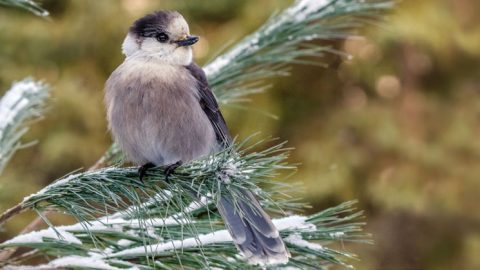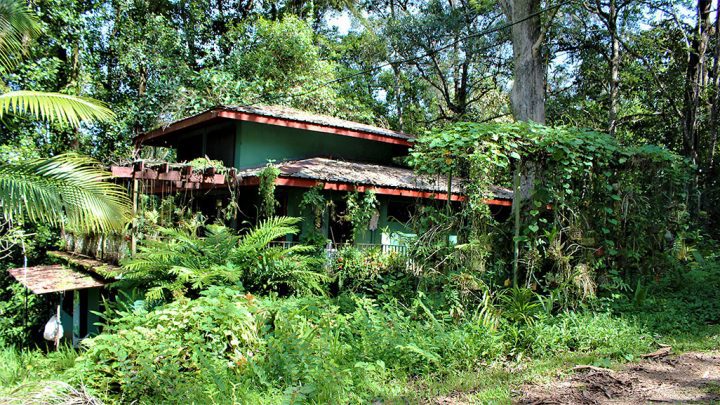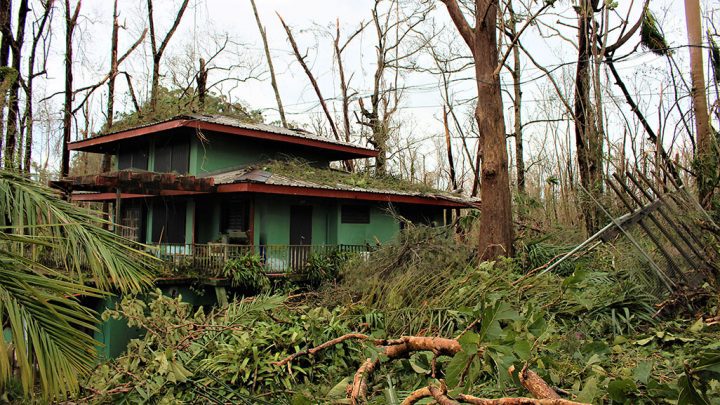How the Puerto Rican Parrot Survived the Devastating 2017 Hurricane Season
By Greg Breining
December 14, 2017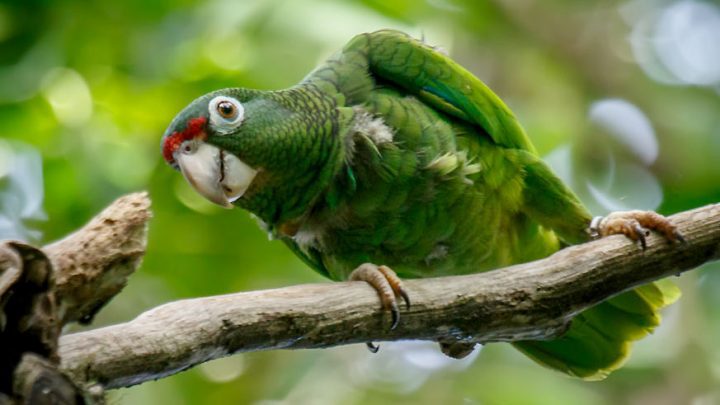
From the Winter 2018 issue of Living Bird magazine. Subscribe now.
Hurricanes Irma and Maria ripped through Puerto Rico in September. In addition to tremendous damages for the people of the island, the storms dealt a major blow to efforts to restore populations of the endangered Puerto Rican Parrot.
Maria’s sustained winds, exceeding 100 miles an hour, leveled much of the rainforest in the mountainous El Yunque National Forest at the eastern, windward end of the island, where a flock of 56 parrots lived.
Biologists are still searching the jumble of downed trees at El Yunque, “but the initial findings are disheartening,” says Nilda Jimenez, endangered species coordinator for the Puerto Rico Department of Natural and Environmental Resources. “Fewer than a dozen individuals have been accounted for and several of these have been found dead.”
Fortunately, the parrot recovery team had reintroduced a second wild population of parrots on the western side of the island, beginning in 2006. This reintroduced flock, living in the second-growth forests of Rio Abajo State Forest, fared better, as many birds found shelter in the hilly topography. At least 92 of the more than 130 parrots that lived around Rio Abajo survived.
“We are still sighting new parrots [at Rio Abajo],” says Jimenez. “We are not yet sure what the final survival estimate is, but the initial numbers are encouraging.”
Still, their habitat took a beating, as the forest canopy at Rio Abajo was blown to the ground. Parrots were seen foraging for fruit off the downed trees.

Before: The Rio Abajo aviary, where captive breeding of Puerto Rican Parrots is conducted, lies on the relatively sheltered western side of the island. Photo by Ricardo Valentin. 
After: The aviary remained standing, but the hurricanes leveled much of the surrounding forest, including Puerto Rican Parrot habitat. Photo taken 2 days after Hurricane Maria. Photo by Ricardo Valentin.
The Puerto Rican Parrot—a gorgeous emerald-green bird with a scarlet forehead and white eyerings—may once have numbered a million birds. But during colonization, first by Spain and then the United States, Puerto Rico’s lowland forests were logged and destroyed. The birds, which nested in the cavities of old trees and ate a variety of tree seeds, nearly disappeared. The parrot was designated as a federally endangered species in 1967, and efforts to establish a captive aviary population began in 1973. The wild population dwindled to just 13 individuals in 1975.
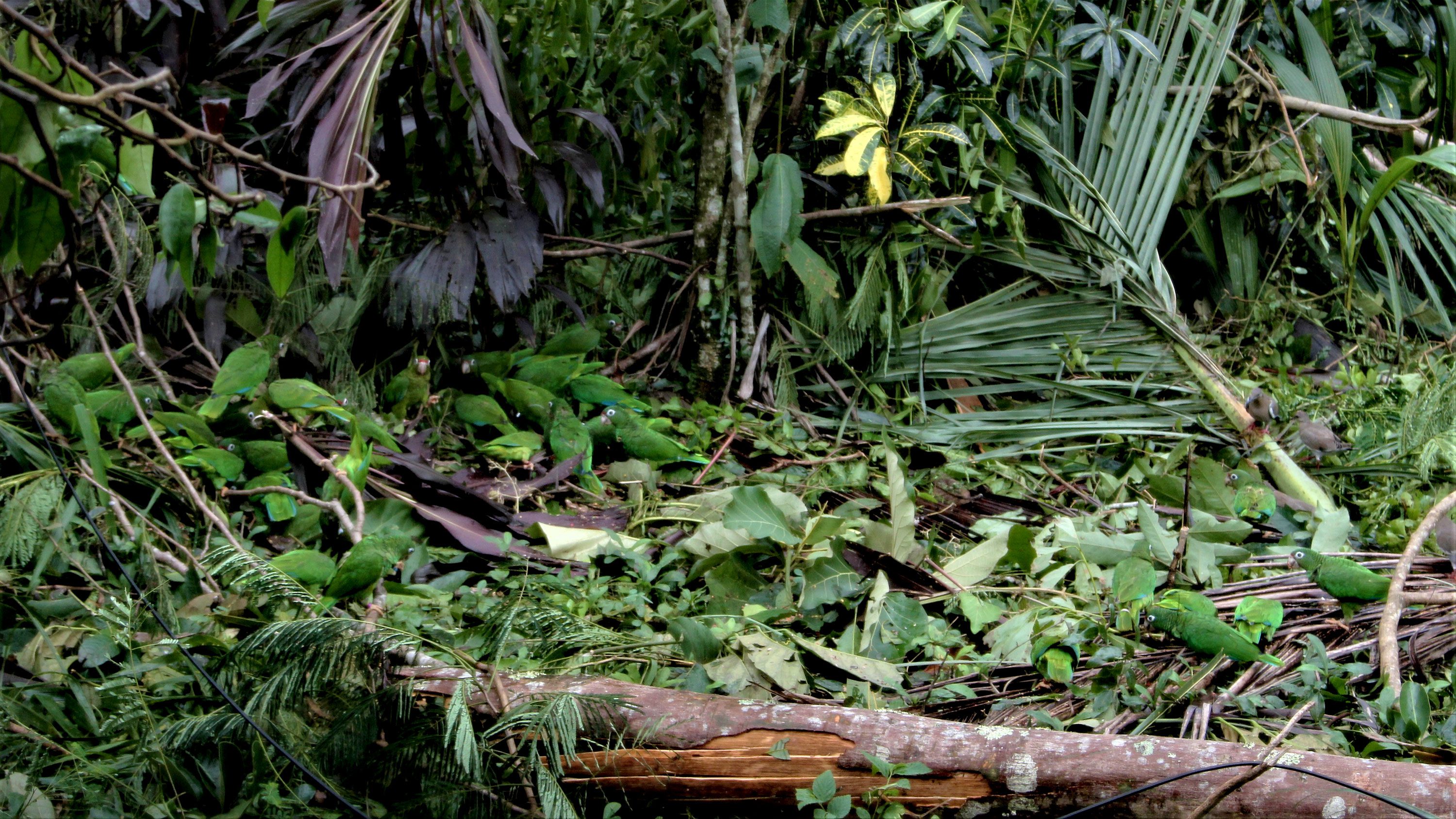
By 1989 the species had started a modest comeback, with more than 40 wild parrots on the island, when Hurricane Hugo swept through and cut that population in half. But by that time biologists with the U.S. Fish and Wildlife Service and the Puerto Rican DNER had built up a flourishing captive population of parrots at three breeding centers. Those captive flocks have been key to strengthening the island’s wild parrot populations over the past decade Before Irma hit, Puerto Rico’s wild parrot population was the highest it had been since 1967.
There are about 450 parrots in captivity now, and they weathered the most recent hurricanes in concrete bunkers, with only nine casualties. As for the wild parrots, the storm survivors are being supplied a mixture of pellets and seeds from artificial feeders stocked by biologists at El Yunque and Rio Abajo. Says Jimenez, “The birds are responding well to the presence of the feeders and visit the feeding stations every day.”
The feeding program supports the wild birds while their forest habitat recovers. It also keeps individual parrots from dispersing from the flock, which would make them vulnerable to Red-tailed Hawks, especially without protection from the forest canopy.
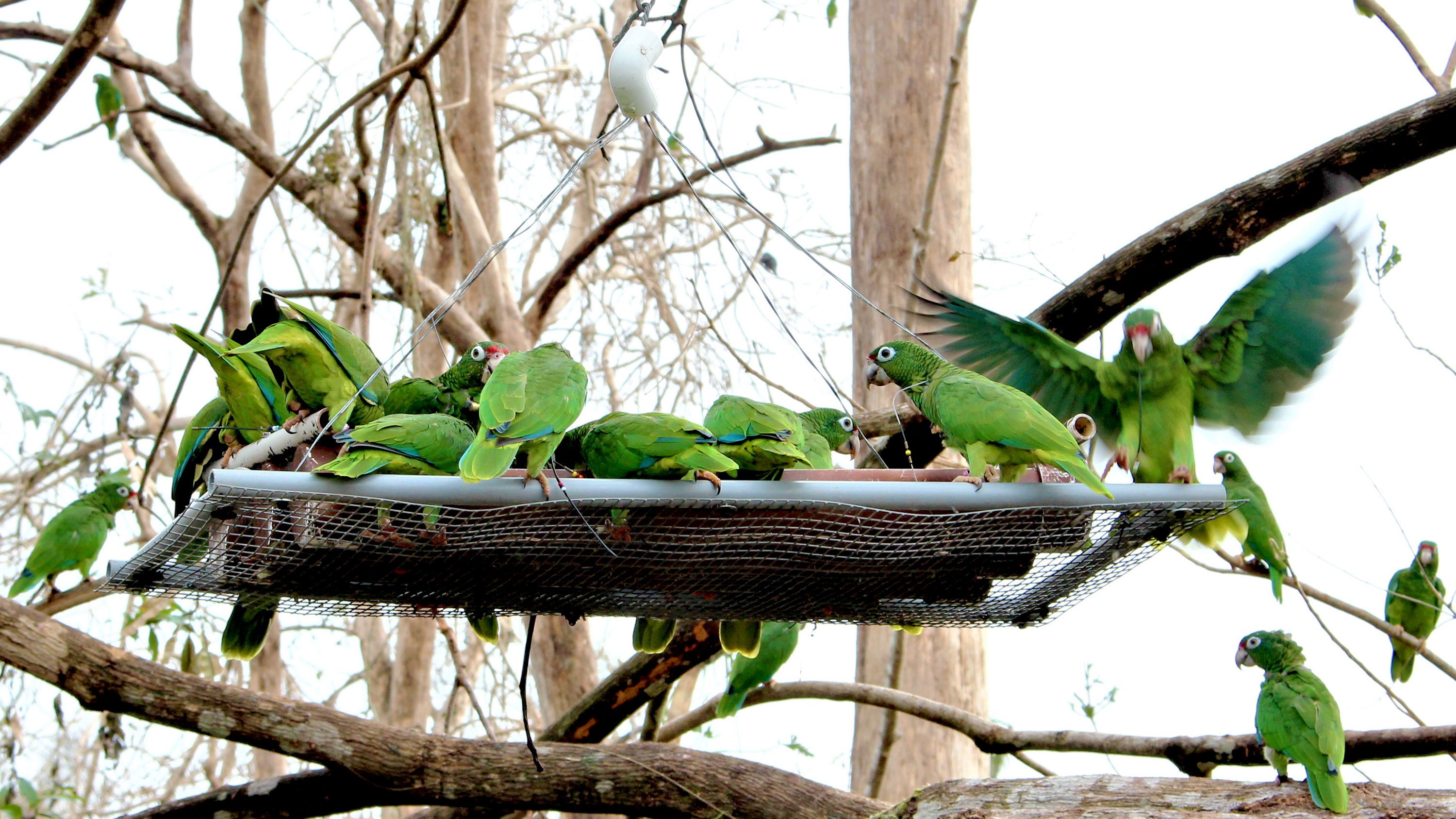
The storm also destroyed the hollow trees and artificial boxes where parrots have nested. But new nesting boxes will be installed by biologists, and the winds may have broken limbs and trunks to create new nesting cavities.
“It is still too early to assess what types of cavities may have been created by the storm or whether the parrots will use them, but it is one small silver lining,” says Jimenez.
Puerto Rican Parrots have weathered and recovered from hurricanes for millennia. But rarely have they faced destruction as severe as that wrought by Hurricanes Irma and, especially, Maria.
“Hurricane Maria will likely represent a setback in the recovery of this iconic species, but it will not be a permanent one,” says Jimenez. “Looking at how resilient the species was, enduring a direct impact of this unprecedented hurricane, we are hopeful for the long term.”
Three Other Endangered Birds Affected by the Hurricanes
By Marc Devokaitis
Whooping Crane
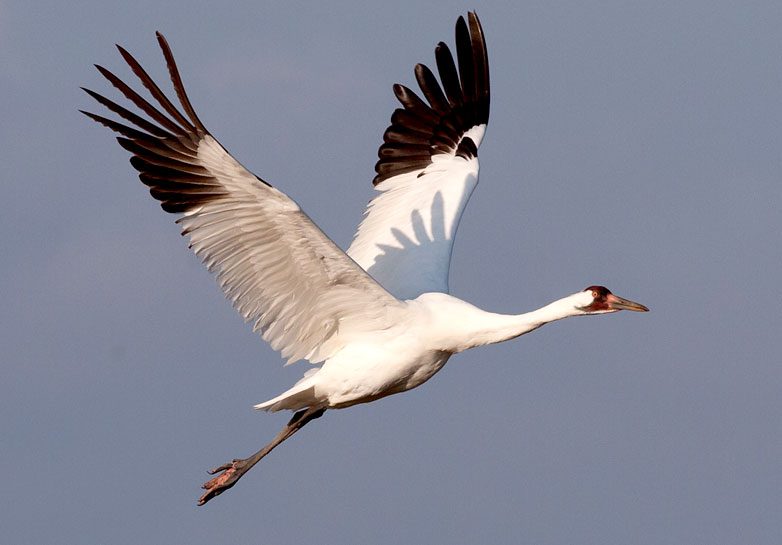
In late August, the city of Rockport, Texas, took a direct hit from Hurricane Harvey. Just 20 miles to the north lies the Aransas National Wildlife Refuge, winter home of more than 300 Whooping Cranes. The marshes in the refuge look to be in relatively good shape, and so do the cranes, says USFWS Whooping Crane recovery coordinator Wade Harrell. In a blog post, Harrell wrote: “From a long-term perspective, the freshwater inflows associated with the hurricane’s rain event will improve coastal marsh conditions. We’ve seen a number of Whooping Cranes foraging successfully in the coastal marshes.”
“Attwater’s” Greater Prairie-Chicken
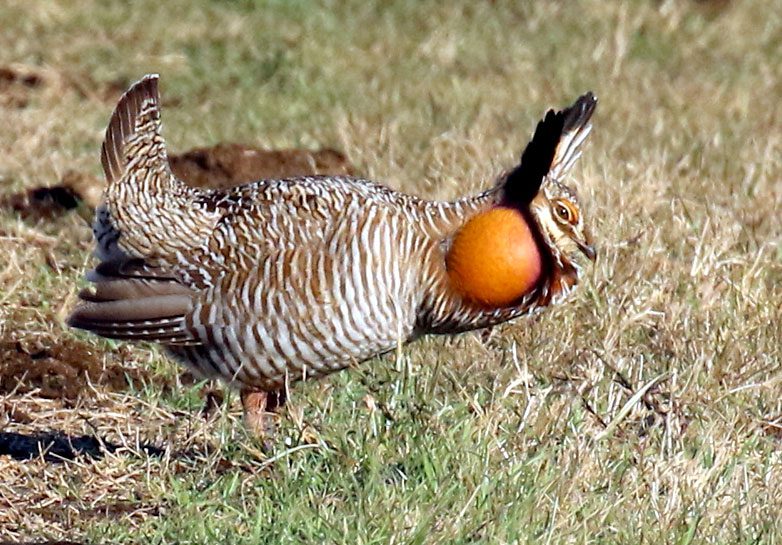
The Attwater Prairie-Chicken National Wildlife Refuge outside of Houston is home to most of the world’s remaining “Attwater’s” Prairie-Chickens, a subspecies of Greater Prairie-Chicken. Between 40 and 50 individuals were on the refuge when Hurricane Harvey hit. Only five of the 29 hens being tracked by USFWS biologists were confirmed alive after the storm. The deaths may have been caused by flooding, or by increased predation as birds fled their preferred habitat and ventured outside of their safety zone. The population will soon receive its annual booster shot, when the USFWS releases captive-bred prairie-chickens into the area. Fortunately, this year’s group of captive birds hadn’t been released yet when Harvey hit. The captive birds rode out the storm in the safety of the Houston Zoo. Seventy prairie-chickens were released into the refuge in October. “Although this storm dealt a devastating blow to the “Attwater’s” Prairie-Chicken population, I am confident that the birds can rebound, barring any other catastrophic event,” said refuge manager Terry Rossignol.
Barbuda Warbler
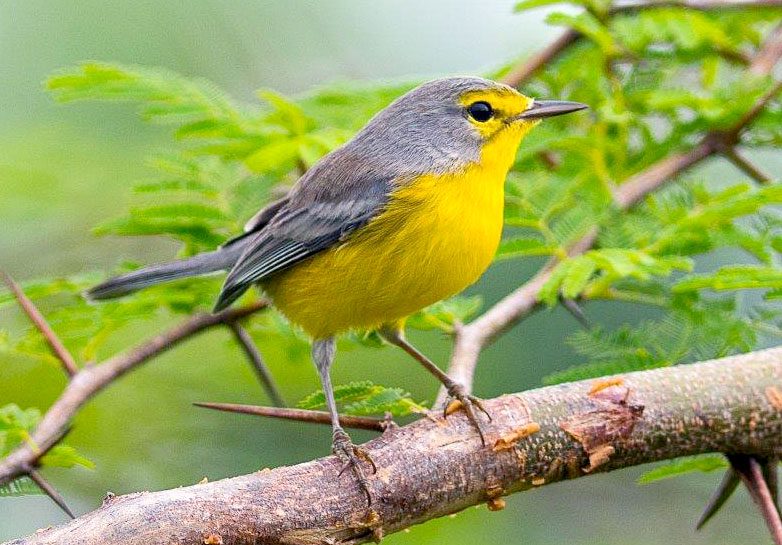
As Hurricane Irma bore down on the tiny Caribbean island of Barbuda, the entire human population of about 1,600 people evacuated to Antigua and other nearby locales. Many residents still have not returned to the island. But the island’s sole endemic bird species seems to be largely present and accounted for, says Jeff Gerbracht, an eBird programmer who visited Barbuda in October. Gerbracht was part of a team charged with surveying the population status of the near-threatened Barbuda Warbler.
Gerbracht and his team found Barbuda Warblers in nearly 70 percent of areas surveyed. “We often counted 15 to 20 individuals in a morning,” he said. “At one point we had five singing at a single location.”
Though the data analysis is not complete, early signs point to a population estimate of Barbuda Warblers that is similar to what it was before the storm.

All About Birds
is a free resource
Available for everyone,
funded by donors like you
American Kestrel by Blair Dudeck / Macaulay Library
